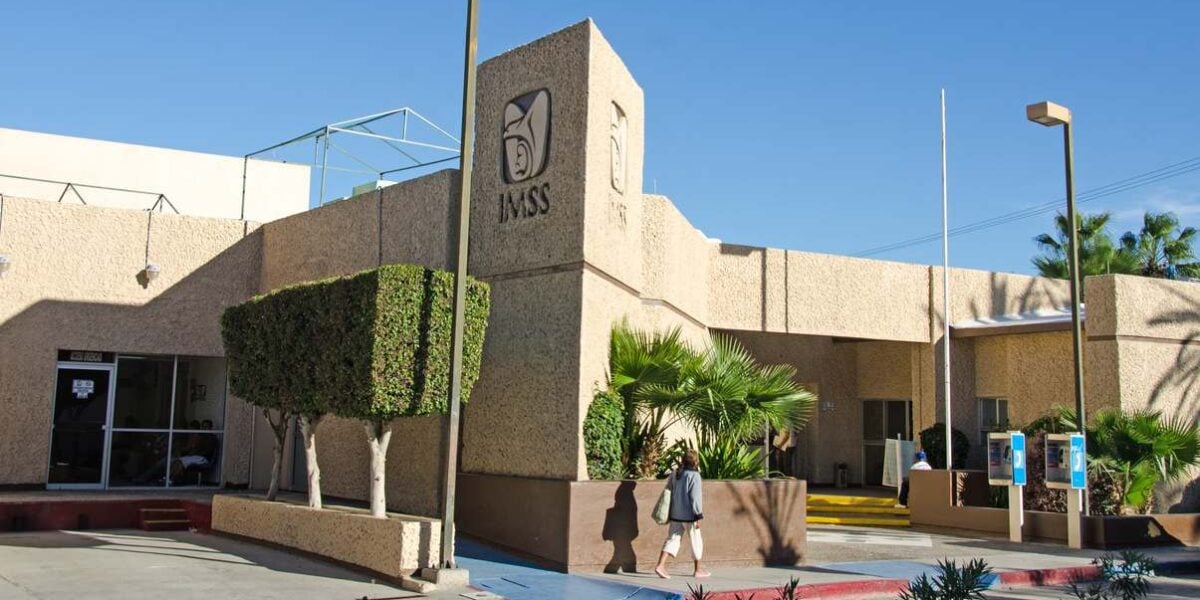Accessing Care as a Visitor or Expat in Mexico

Whether you’re visiting briefly or planning a long-term move, this article provides an overview of healthcare in Mexico, including public and private services, how to access care, and the costs you can expect.

Find the Best International Medical Insurance
- Compare multiple quotes and coverage options
- Work with an insurance expert at no additional cost
- Find the best plan for your needs and budget
An Overview of Healthcare in Mexico
Mexico’s healthcare system offers a high standard of care through a mix of public and private providers. Major cities and tourist hubs are home to modern hospitals and well-equipped clinics.
Mexico has become the world’s second most popular destination for medical tourism, thanks to its affordable private care, which can cost 50–70% less than similar treatments in the United States. This benefits both travelers seeking elective procedures and expats managing routine healthcare expenses.
Public healthcare is guaranteed as a constitutional right, but access and quality vary widely across the country. In many rural or underserved areas, residents may only receive basic care or rely on family support and traditional medicine due to cost or limited availability.
Because of these challenges, Mexico ranks 50th out of 110 countries in CEOWorld’s 2024 Health Care Index.
Read More: The Best Healthcare in the World: Country Rankings
Does Mexico Have Universal Healthcare?
Mexico aims to provide its citizens free or low-cost healthcare and medication through public programs like the Mexican Social Security Institute (IMSS) and the Institute of Health for Welfare (INSABI).
IMSS primarily covers workers employed by Mexican companies, including citizens and some legal permanent residents. Employers typically manage enrollment.
Contributions are automatically deducted from paychecks, making IMSS coverage relatively affordable (around USD 400 per year) and granting access to a wide range of public healthcare services.
While many services, such as surgeries and medications from IMSS pharmacies, are free or subsidized, some costs, including dental care, eye care, and certain medications (mainly when obtained outside IMSS pharmacies), may require out-of-pocket payments.

Beyond IMSS, Mexico provides free public healthcare for vulnerable populations through programs formerly known as INSABI. These programs have been restructured multiple times since 2020 and continue to evolve. They serve those who are unemployed, homeless, or medically ineligible for IMSS.
However, coverage is limited for chronic conditions, major surgeries, cancer treatment, and long-term care. Additionally, some states, like Jalisco, have opted out of the federal system to operate their own public healthcare programs, leading to regional variations in coverage and access.
Because of these limitations, more people have turned to private medical care in Mexico for faster access, broader provider options, and more consistent quality. You can read more about private healthcare further down in this article.
Read More: Health Insurance for Foreigners in Mexico
How is Public Healthcare Funded in Mexico?
Public healthcare in Mexico is funded by the federal government, state governments, and contributions from employees and employers to the IMSS. These combined funding sources support the services provided through IMSS and other public programs.
Despite this mixed funding, Mexico’s per capita healthcare expenditure remains low compared to other OECD countries, at less than 6% of its GDP.
The Pros and Cons of Mexico’s Public Healthcare System
Mexico’s IMSS public healthcare system differs significantly from private care. Here are some key pros and cons of the public system:
The Pros
- Affordable Care: For IMSS members and Mexican citizens, the public system offers free or low-cost services, including urgent care and many medications.
- Skilled Practitioners: Many Mexican doctors receive excellent medical education domestically and often pursue further training internationally. Many work part-time in both IMSS and private practice, so the expertise available in the public system can be on par with private care.
- Holistic and Personal Care: Medical practitioners often take a holistic approach to patient care. Mexican law mandates that patients have access to their medical records. Some IMSS doctors even continue the tradition of making house calls.
- Vast Coverage Network: IMSS has an extensive nationwide network of clinics and hospitals, making healthcare accessible in many urban and semi-urban areas.
- Preventive Care and Public Health Programs: IMSS also offers preventive services, such as vaccinations, health screenings, and education programs, to help improve public health.
The Cons
- Limited Choice of Providers: The public system assigns patients to specific clinics and doctors based on their residence, so you cannot choose your healthcare provider. Long wait times and delays for specialist or higher-quality care are common.
- Understaffed Facilities: Public hospitals and clinics are often crowded, with a high patient-to-doctor ratio. The primary language of care is Spanish. Due to limited nursing and support staff, families frequently need to assist with patient care during hospital stays.
- Pre-Existing Conditions May Not Be Covered: A major limitation for immigrants is that IMSS excludes coverage for many pre-existing conditions, including cancer, diabetes, and addictions.
- Bureaucracy and Administrative Challenges: Navigating the IMSS bureaucracy can be complex and time-consuming, especially for new members or foreigners unfamiliar with the system.
- Quality Varies by Location: While major cities have relatively good facilities, healthcare quality and availability may decline in rural or underserved regions.
- Language Barriers: Though Spanish is the primary language, limited English support can be challenging for expats or visitors.
Can Foreigners Access Public Healthcare in Mexico?
Mexico’s many private clinics offer travelers and tourists quick access to medical care. Visitors can also receive emergency treatment in public hospitals, and in some rural areas, there may be an overlap with the public system.
Healthcare for Foreigners in Mexico
Tourists and other short-term foreign visitors are not eligible for public healthcare in Mexico. If you’re visiting, it’s essential to have travel medical insurance with emergency coverage. Be prepared to pay medical expenses upfront and file for reimbursement with your insurer afterward.
Expats living in Mexico with legal resident status have two main healthcare options: private coverage or access to the public healthcare system through the IMSS (Mexican Social Security Institute). Many expats, especially part-timers, prefer to go private due to broader coverage and flexibility.
The IMSS and Expats Living in Mexico
Foreigners residing in Mexico may qualify for public care via IMSS if they hold a Temporary or Permanent Resident visa, even if they’re not employed. However, those with pre-existing conditions might be restricted from enrolling.
IMSS coverage is more limited than private insurance. It typically excludes dental care, eye care, and elective surgeries, and only covers services provided by IMSS-affiliated providers within Mexico.

If you’re not formally employed in Mexico, you can voluntarily enroll in IMSS by paying monthly or annual fees. For example, a retired U.S. couple in their 60s might pay roughly $2,000 per year for IMSS coverage, in addition to out-of-pocket costs for services not covered by IMSS.
For detailed fee information, check the IMSS fee tables.
Helpful Tip! If you’re admitted to a public hospital in Mexico, family and friends are expected to assist with your food, hygiene, and sometimes even basic medical care. These caregivers are called cuidadores. It can be challenging to navigate public hospitals without a cuidador, so be prepared either to pay for extra care or to manage without assistance.
Healthcare for Part-Time Residents of Mexico
Many foreigners live part-time in Mexico to escape colder climates elsewhere. These part-time residents often use short-term visitor visas and may choose to receive most healthcare in their home country while accessing affordable private care in Mexico.
If part-time residents hold legal residency, they might qualify for IMSS. However, many opt for an international medical plan that offers flexibility, covers multiple countries, and supports travel.
If you live in Mexico part-time or for short periods, make sure your global medical plan includes repatriation coverage. This can help cover the cost of returning to your home country for major medical emergencies.
How to Access Public Healthcare as an Expat or Visitor in Mexico
You can only access Mexico’s public healthcare system as a resident with legal status, such as a temporary or permanent resident visa. This allows you to register for IMSS.
Registering for Healthcare in Mexico
Enrolling in the public system can feel intimidating at first. Your initial step is obtaining a CURP number (Clave Única de Registro de Población), a unique population registry code.
If you are employed in Mexico, your employer will usually assist with IMSS registration. If you are not employed in Mexico, you are responsible for registering yourself, either online or at a local IMSS office.
There is a registration fee of around $30 USD. If your Spanish isn’t strong, it’s helpful to get assistance from a local friend or hire an interpreter. Some visits may require you to appear in person.
There is no registration fee for care through INSABI, which covers vulnerable populations, but INSABI’s services are limited. Most foreigners who live in Mexico prefer IMSS or a global medical plan for broader coverage.
What Documents Do You Need to Register?
To register for public care in Mexico, you will need:
- Identification: Passport, driver’s license
- Proof of immigration status: Residency card or visa certificates
- Proof of residency: Lease or rental agreement, utility bills showing your address
Processing Time
Registration for IMSS can take as little as half an hour if you have all of your documentation. If your residency visas are still being processed, your application will not proceed until they are approved.
When you’re registered, you’ll visit your local IMSS office to receive an IMSS card. Your coverage will begin on the first day of the month after you register.
How to Access Emergency Treatment as a Foreigner in Mexico
Hospital emergency rooms in Mexico will treat anyone who needs urgent care. Many larger cities also have 24-hour clinics that provide urgent treatment and can stabilize patients before transferring them to hospitals if necessary. Emergency care generally requires payment at the time of service.
Large urban hospitals often have multilingual staff, while rural facilities usually operate only in Spanish. Translation apps can help with communication, so download and test one before traveling.
Travelers should carry sufficient funds for emergency care, as many Mexican providers do not participate in direct billing with international insurance companies. You may need to pay upfront and submit receipts later for reimbursement. In some cases, payment may be required before treatment.
Read More: Hospitals in Mexico
Pharmacies in Mexico
There are two types of pharmacies in Mexico: Segunda Clase (second class) and Primera Clase (first class).
- Segunda Clase (Second Class): These sell common, non-regulated medications like antibiotics, cholesterol, and allergy medicines, but cannot dispense controlled substances like certain painkillers.
- Primera Clase (First Class): Often located near hospitals, these pharmacies dispense all prescription medications, including controlled drugs. Ask your doctor about the closest primera clase pharmacy if you have restricted or complex medication needs.
Be cautious of pharmacies selling medications at suspiciously low prices, as counterfeit drugs may contain dangerous substances like fentanyl or methamphetamine. To minimize risk, use reputable primera clase pharmacies.
Private Healthcare in Mexico
Private healthcare is the preferred choice for many expats in Mexico due to its high quality, short wait times, attentive doctors, and affordable pricing. Since the reforms in 2020, more locals have also turned to private care for its convenience, privacy, and wider range of providers.
Mexico has become a hub for medical tourism, attracting travelers from the U.S., Canada, and beyond for services like affordable medications, dental work, and elective procedures. Many private hospitals and clinics cater specifically to international patients, offering multilingual staff and personalized care.

Find the Best International Medical Insurance
- Compare multiple quotes and coverage options
- Work with an insurance expert at no additional cost
- Find the best plan for your needs and budget
A private medical plan provides access to top-tier facilities and faster service, making it an appealing option for those seeking flexible, comprehensive care. While generally more expensive than public coverage, it typically offers enhanced comfort and broader provider options.
Long-term expats in Mexico often combine private healthcare with a global medical plan that covers both local and global care, while part-time residents and frequent travelers may purchase a travel medical plan for flexible, short-term coverage.
How Popular and Accessible is Private Healthcare in Mexico?
Visitors generally find it easy to access private healthcare in Mexico. Private providers often guarantee English-speaking doctors and facilities that deliver better care for solo expats or travelers. This higher standard motivates many to obtain private coverage.
Many Mexicans also supplement their public healthcare with private care to avoid waiting lists or to access services not covered by public programs. While private coverage is less common among Mexican citizens, its adoption has grown since 2020.
Some rural or remote regions of Mexico have limited access to high-quality private care and may present safety concerns, such as gang or cartel conflicts.
These challenges make such regions less popular with tourists and expats. Although healthcare in rural areas has improved over the past decade, emergency and multilingual care remain difficult to access.
How is Private Healthcare Funded and Licensed in Mexico?
Private healthcare in Mexico is mainly funded through out-of-pocket patient payments, with additional contributions from domestic and international insurers. Some Mexicans have private coverage through employers or individually purchased plans.
The robust medical tourism industry also plays a significant role in funding private healthcare. In fact, up to 39% of Mexico’s private care spending in 2022 came from Mexican citizens.
The Mexican Ministry of Health and state health authorities license private providers and clinics in Mexico. These facilities must follow national medical regulations and the guidelines set by the Federal Commission for the Protection against Sanitary Risks (COFEPRIS), particularly for medical devices and pharmaceuticals.
The top-tier hospitals, like Hospital Médica Sur in Mexico City, hold Joint Commission International accreditation.
Helpful Tip! For your safety, always seek treatments from regulated clinics and healthcare providers. Some clinics, especially those offering stem cell therapies, operate outside official regulation.
How to Access Private Healthcare in Mexico as an Expat or Visitor
Much of Mexico’s private system is designed to serve visitors who pay out of pocket. You can find doctors or clinics online or by walking through local neighborhoods, then schedule an appointment. Clinics advertising 24/7 service may accept walk-in patients for minor care.
For long-term care, many expats select private medical clinics or small hospitals offering services in their language. Upscale clinics often provide a wide range of care, with specialists visiting on set days.

Some clinics specialize in elder care for retirees and offer membership plans that prioritize care, with fees ranging from free to $400–$1,000 annually. Some even provide medical service coordinators to help manage appointments.
Your primary care doctor can refer you to specialists, or you can book specialist visits directly. Clinics that accept certain American or Canadian medical plans tend to be at the higher end of Mexico’s pricing spectrum.
This is because the reimbursement process for global insurers is complex and requires clinics to handle additional paperwork and coordination, which can increase costs.
Helpful Tip! Many clinics use online communication tools such as WhatsApp, and doctors offer telehealth sessions. Visitors comfortable with Spanish often use apps like Doctoralia to find doctors locally or virtually.
How Much Does Healthcare Cost in Mexico?
A standard doctor’s visit typically starts at around $25 USD. Diagnostic tests can cost up to one-third less than in the United States, though prices increase with more complex procedures. Some clinics and hospitals offer payment plans.
Tourists and expats should note that healthcare facilities in tourist-heavy areas may inflate prices, including ambulance fees. Short-term travelers should carry comprehensive coverage to avoid unexpected costs and billing disputes.
Private Healthcare Costs in Mexico
The average costs (in USD) for emergency and standard care are typically as follows:
- Pharmacy clinic visit: $5 to $30 plus medications
- Urgent care clinic visit: $25 to $150
- Primary care provider visit: $40 to $150 (the higher rate may include services that have their own charges, like measuring blood pressure, giving injections, or providing a medical certificate)
- Specialist visit: $40 to $200
- Emergency room visit: $50 to $500
- Dentist visit for checkup or cleaning: $35 – $60
- Optometrist visit: $18 to $90
- Ambulance service: $350 to $980 within cities; longer trips can cost up to $5,000
Ambulance costs can be especially high for foreigners. In many cities, multiple private ambulance companies compete for patients, with varying charges. A global health plan is a crucial safeguard for covering these potentially large expenses.
Health Coverage Options for Expats and Visitors in Mexico
Your coverage needs in Mexico depend on how long you plan to stay. For short-term visitors, travel insurance typically provides essential coverage during your trip.
However, if you’re staying longer, such as a digital nomad, part-time resident, or “snowbird”, a global medical plan that covers care both in Mexico and abroad is usually the best option.
In any case, it’s crucial to confirm that your policy includes coverage in Mexico before you travel to avoid unexpected costs.
For more details, check out our articles on Health Insurance for Foreigners in Mexico and Travel Insurance for Mexico to find a plan tailored to your stay and budget.
Does North American Health Insurance Cover Healthcare in Mexico?
Many clinics and hospitals in Mexico claim to accept U.S. or Canadian health insurance, but standard plans typically do not reimburse claims from providers outside their home countries.
When coverage is available, it usually applies only to emergency care, not ongoing or routine treatment abroad, including in Mexico.
This limitation also applies to U.S. Medicare, which generally does not cover services outside the United States.
Read More: Does My Health Insurance Cover International Travel?
Finding the Right Healthcare for Your Life in Mexico
Mexico’s healthcare system offers a broad range of options, from public clinics to private hospitals, with many modern facilities available in cities and popular tourist areas.
While public care is accessible to residents, quality and coverage can vary, especially outside urban centers. Many visitors and expats prefer private care for faster service and more provider choices.
Healthcare in Mexico is not free for everyone, and even with public health support, foreign residents often face some out-of-pocket costs. A comprehensive medical plan tailored to your travel or residency needs is essential to avoid unexpected expenses and ensure access to care when it matters most.

Find the Best International Medical Insurance
- Compare multiple quotes and coverage options
- Work with an insurance expert at no additional cost
- Find the best plan for your needs and budget
To get the most from healthcare in Mexico, consider your personal health goals and budget, ensuring essential needs are covered before elective procedures.
Understanding local options will help you stay healthy and confident during your stay, whether short-term or long-term.
Frequently Asked Questions
Is healthcare in Mexico cheap?
Mexican citizens have access to free or low-cost public healthcare. Basic private care is generally affordable for those with North American incomes. However, high-end private hospitals can be expensive, though still typically cheaper than equivalent U.S. facilities. Emergency services, like ambulance rides, and long-term care costs can add up.
Is healthcare in Mexico of good quality?
Healthcare quality in Mexico ranges from good to excellent. Like any large healthcare system, there are some providers of varying quality. Before choosing a provider, check online reviews, verify accreditations, and seek recommendations from local residents.
Can I use U.S. medical insurance or Medicaid in Mexico?
Most U.S. medical insurance plans and Medicaid do not cover care outside the U.S., including Mexico. Always verify if your specific plan offers international coverage. Medicaid has limited international coverage options and typically does not apply for routine care in Mexico.
What happens if I don’t have health insurance in Mexico?
Without health insurance or coverage through IMSS or other public programs, you must pay out of pocket for medical services. Payment is often required upfront or as a guarantee before treatment. Travelers and expats should secure an adequate medical plan to avoid high out-of-pocket costs.
